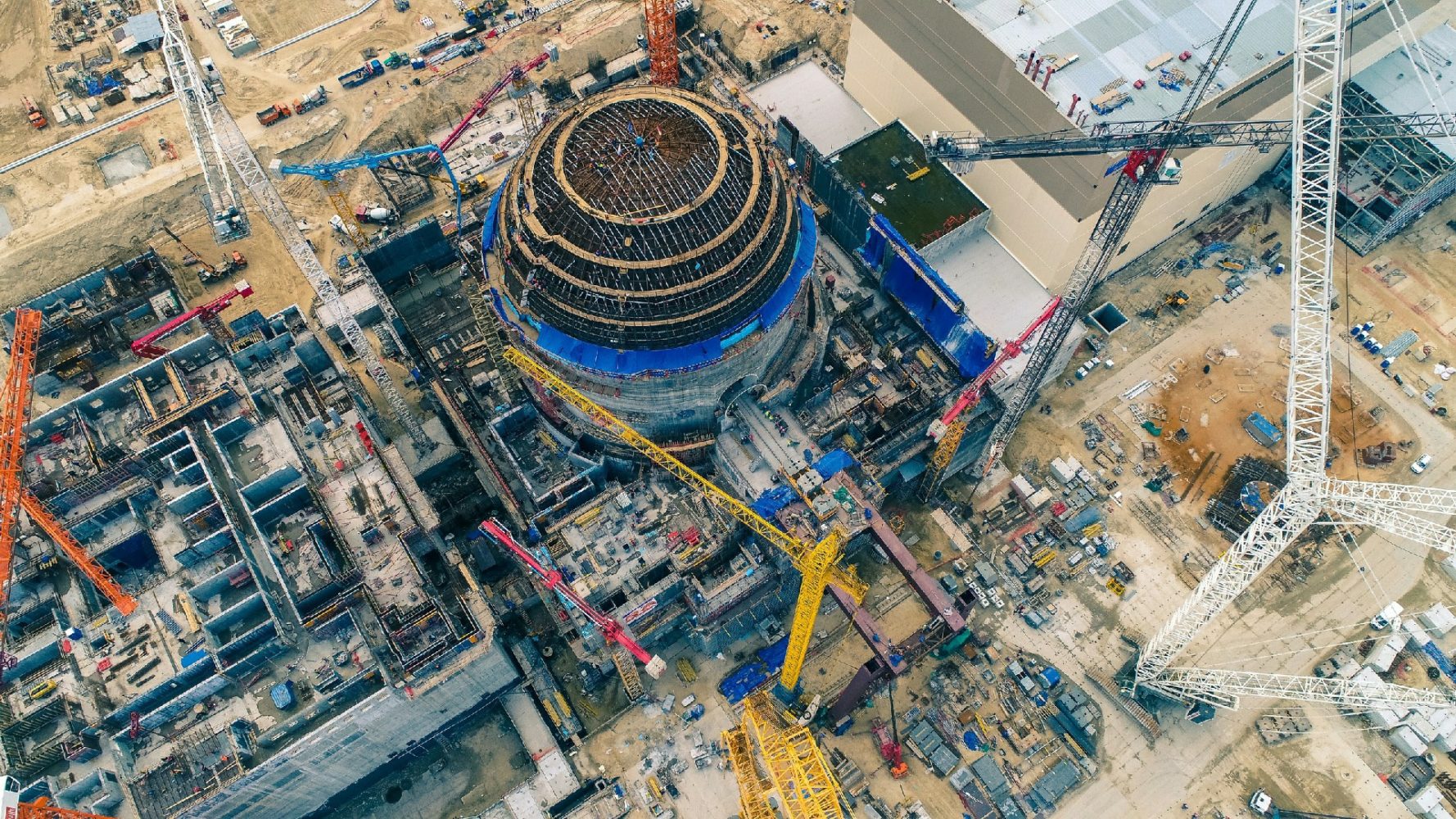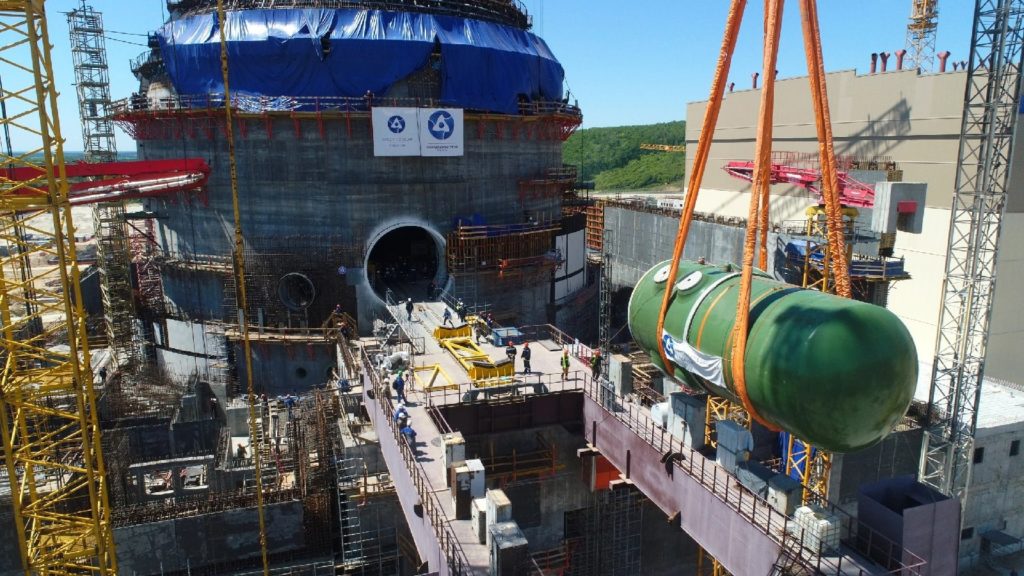
From Russia with Help
back to contentsRosEnergoAtom is the national operator of Russian nuclear power plants. Its core activities seem to be unrelated to international projects, but it is here that Rosatom gains experience in nuclear plant operation to be shared with nuclear operators worldwide.
As an operator of nuclear power plants, RosEnergoAtom belongs to Rosatom’s core divisions. Its key function is to manage the end-to-end operation of nuclear generation sites in Russia, counting ten onshore nuclear stations and one floating nuclear power plant Akademik Lomonosov.
RosEnergoAtom is always the first to operate nuclear power plants built to new Russian-developed designs. For example, the first Generation III+ VVER‑1200 reactors were built at the Novovoronezh and Leningrad plants and only then offered to international customers. One VVER‑1200‑based power unit is already in operation in Belarus; the second unit will soon achieve its first criticality. Power units of the same design are under construction in Bangladesh, Egypt, Turkey and China and prepared for construction in Hungary.
Support for international projects
Employees of RosEnergoAtom’s subsidiaries — AtomEnergoRemont, AtomTechEnergo and others — take part in the commissioning of power units at the Belarus NPP and Rooppur NPP and provide support across a variety of technical tasks. In Bangladesh, RosEnergoAtom engineers are engaged in the deployment of national nuclear infrastructure, staff training, installation of simulators in the training center and so on.
Staff training for overseas nuclear power plants is a priority for the company. The staff training process is divided in several stages. Employees first study the theory of a reference nuclear plant and then proceed with practical training. This is followed by simulator training classes, including hands-on training on full-scale and analytical simulators at the reference nuclear power plant. Internship at the reference plant is mandatory. The last stage involves theoretical, practical, simulator and internship training at the customer’s plant. RosEnergoAtom assists local staff at Akkuyu, Rooppur, Paks II and El Dabaa nuclear power plants.
The company also provides services related to maintenance and repairs, upgrade, life extension, supplies of spare parts and equipment, maintenance and repair assistance, nuclear fuel and equipment quality assurance, and engineering support. The most vivid example in this respect is a comprehensive upgrade program delivered at the Armenian NPP.

New modifications
Russia is currently building a two-unit Kursk II NPP that will feature VVER-TOI power reactors (VVER-TOI stands literally for Water-Water Energy Reactor Universal Optimized Digital), which are an improved version of the VVER‑1200 reactor.
‘Universal’ means that the design and solutions employed are suitable for any climatic zone. ‘Optimized’ means an optimized layout. For example, the normal operation power supply building is now placed between the turbine and reactor islands and not to the side of the turbine island as in earlier versions. As a result, construction footprint has decreased, and so did the length of cables. Other improvements comprise ventilation systems and nuclear waste management procedures. ‘Digital’ means the use of MultiD technology in design engineering. This technology employs a digital model to manage construction costs and supervise the plant operation until the end of its service life.
First concrete was poured for Unit 1 of Kursk II in April 2018, followed by the first concrete pouring at Unit 2 a year later. By now, the reactor building of Unit 1 has been completed and covered by the containment dome; installation of the equipment is presently underway. A reactor pressure vessel was installed in June of this year. Although the RPV weighs nearly 340 tons, the operation was performed with a pinpoint accuracy — the maximum installation tolerance is as small as 0.1 mm. After the dome was put in place, the workers proceeded with the installation of thermal and mechanical equipment. Preparations are underway for the welding of primary coolant pumps — their installation will begin soon.
In the turbine island of Kursk II Unit 1, the workers finished the building envelope, concreted a foundation for the turbine and installed a turbine generator stator. With a capacity of 1,255 MW, this will be the most powerful generator among those installed at the Russian nuclear power plants. The cooling tower grew by 100 meters over a year to reach 130 meters — its total height will be 179 meters to make it the highest cooling tower in the world.
At Unit 2, the workers are installing the third tier of the internal containment shell and will soon proceed with the installation of emergency core cooling system tanks. The shell of the turbine island has been finished; preparations are underway to install pre-assembled roof girders.
Approaching the closed nuclear fuel cycle
The Beloyarsk nuclear power plant is preparing for an event of global magnitude. For the first time ever, the core of the BN‑800 fast neutron reactor will be fully loaded with mixed oxide (MOX) fuel. For the time being, the share of MOX fuel in the core amounts to 60 %. The fuel loading is performed in stages for safety reasons.
When the share of MOX fuel reaches 100 %, the world will be one step closer to closing the nuclear fuel cycle, which means the use of depleted uranium and recycling of irradiated fuel. The repeated use of the same amount of uranium makes nuclear energy de facto renewable.
29.5 GW of total installed capacity at RosEnergoAtom’s nuclear power plants
37 power reactors in operation
100+ million tons of CO2‑equivalent emissions prevented by Russian nuclear plants annually
Fabrication of isotopes
The nuclear power plants operated by RosEnergoAtom not only generate electricity but also produce isotopes for domestic use and exports. The design of Russian channel-type RBMK reactors make it possible to fabricate and unload isotopes while continuing power generation.
Rosatom is a global leader in the supply of medical isotopes for a variety of applications. For example, RosEnergoAtom produces molybdenum‑99, one of the most sought-after medical isotopes used in cancer diagnostics, on a commercial scale. Iodine isotopes fabricated at the Leningrad NPP are used to make radiopharmaceuticals for cancer treatment.
Cobalt‑60 obtained at RBMK‑1000 is employed in gamma radiation sources for sterilization applications in the food industry, agriculture and waste management, and for gamma-ray flaw detection.
Rosatom plans to increase output and expand the range of isotopes produced. In particular, the Leningrad NPP will begin to fabricate lutetium‑177 in 2023.
Digital services
RosEnergoAtom consistently develops purpose-oriented digital systems. One of them is the Digital NPP Operation Template, a package of digital platforms and tools to ensure safe and cost-efficient operation of a nuclear power plant. Through end-to-end digitalization of technological processes, the template helps manage the plant using real-time data, thus minimizing operational risks and costs.
The company also offers its customers secure cloud-based and private LTE network services, enabling data access by authorized users only. Other dedicated digital systems are AtomStart, an employee onboarding platform, AtomEvent for event organizers and participants, robots for the automation of routine processes, and a media space simulator for public relations departments.




